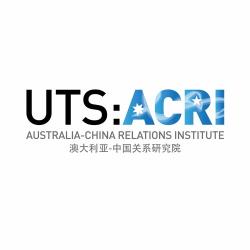Guest: Rowan Callick OBE, author and columnist; Industry Fellow, Griffith University Asia Institute; former China correspondent for The Australian and The Australian Financial Review
Host: Elena Collinson, Senior Project and Research Officer, Australia-China Relations Institute, University of Technology Sydney
Nationalism has a complex history in post-Qing dynasty China, such that there are few – if any – absolutes in the conceptualisations and manifestations of its various forms. . However, it has retained several distinct characteristics throughout the 20th century and early 21st century. Common premises include both pride in ‘5000 years of Chinese civilisation’ and victimisation during China’s ‘century of humiliation’ by the West and by Japan. The underlying narrative now, however, is shifting further to one rooted in pride, in parallel with China’s rise. Moreover, since the ascendancy of the Chinese Communist Party (CCP)lines have become increasingly blurred between grassroots popular nationalism and top-down, party-led nationalism.
How has nationalism evolved in China? How does it manifest in the general populace and how is it harnessed by the CCP? Does CCP-led nationalism act as a euphemism for Han ethnocentrism? To what extent does the phrase, invoked with increasing frequency in discussions, ‘the rising tide of Chinese nationalism’ ring true? And what does Chinese nationalism mean for Australia and its engagement with China? Rowan Callick joins Elena Collinson to discuss these questions and more.
In the current context, Chinese nationalism is led both by the CCP and at the grassroots level. From the top-down, the CCP has propagated a narrative of China’s party-led national rejuvenation and restoration in the post-revolution period from 1949 to Xi Jinping’s ‘new era’ from his second term in the presidency. Improvements in living standards and CCP-driven reminders of the ‘century of humiliation’ are factors in the growth of nationalistic sentiment from the bottom-up.
Mr Callick observes that Han ethnocentrism has essentially been a default feature of Chinese nationalism since the founding of the People's Republic of China (PRC), owing to its roots in protests against non-Han rule. Religious and non-Han ethnic groups are framed as variations of the norm and as such require corrective action if they exhibit loyalty to entities other than the CCP or the PRC. This is seen in efforts to ‘Sinicise’ religions as well as ethnic minority groups in Xinjiang and Tibet to ensure their loyalty is to the state first and foremost, with official justifications often citing state security concerns.
Although generalisations pertaining to China are always subject to exceptions, older demographics with more first-hand memories of suffering associated with China’s instability in the early 20th century support the Party for stabilising China and consequently tend to be more aligned with the CCP. This tendency largely holds among middle-aged demographics who have grown up with a greater level of material wellbeing and credit the Party for enabling this, while it may be less pronounced in younger generations who may view their nation’s prosperity more as a result of their parents’ toil than the Party’s leadership. The Party’s experiences in the late 1980’s, including the Tiananmen Square Massacre in which the military ‘rescued’ the Party, meant that it started to view from that point in time the middle-class as a potential source of disloyalty. This potentially troublesome group and the military thus became the focus of CCP efforts to promote and reward ideological alignment.
While the CCP has stoked or permitted mass actions in the name of nationalism, it is also wary of allowing such movements to threaten its control over nationalist discourse or the nation itself. For instance, protests over the Diaoyu/Senkaku Islands dispute were initially allowed to ‘let off steam’, but were subsequently restricted.
Mr Callick notes that ‘reform and opening up’ in China necessitated a foreign policy that would encourage the inflow of investment and expertise needed for China’s economic modernisation. While this still holds as China seeks to escape the middle-income trap, nationalism is seen as having increasing influence over foreign policy in that the Chinese state leverages its economic strength as a ‘weapon’ and has also been growing its overseas military presence. These serve the nationalist objective of ‘restoring’ China’s status in the global order. Consequently, while economic complementarities and people-to-people links have grown, there are risks in engagement at the institutional level given that institutions in China are inevitably linked to the CCP. The complexity of Australia’s relationship with China means Australia needs to develop a greater capacity to understand and calibrate its engagement. And while the risk of economic coercion – such as via education sector exports – is real, this is qualified by the fact that it is also difficult for the CCP to unilaterally ‘turn the tap off’ on trade.
Summary written by Michael Zhou, Project and Research Officer, Australia-China Relations Institute, University of Technology Sydney.
Technical production by Amy Ma, Communications Officer, Australia-China Relations Institute, University of Technology Sydney.
Theme music by Sam J Mitchell.


